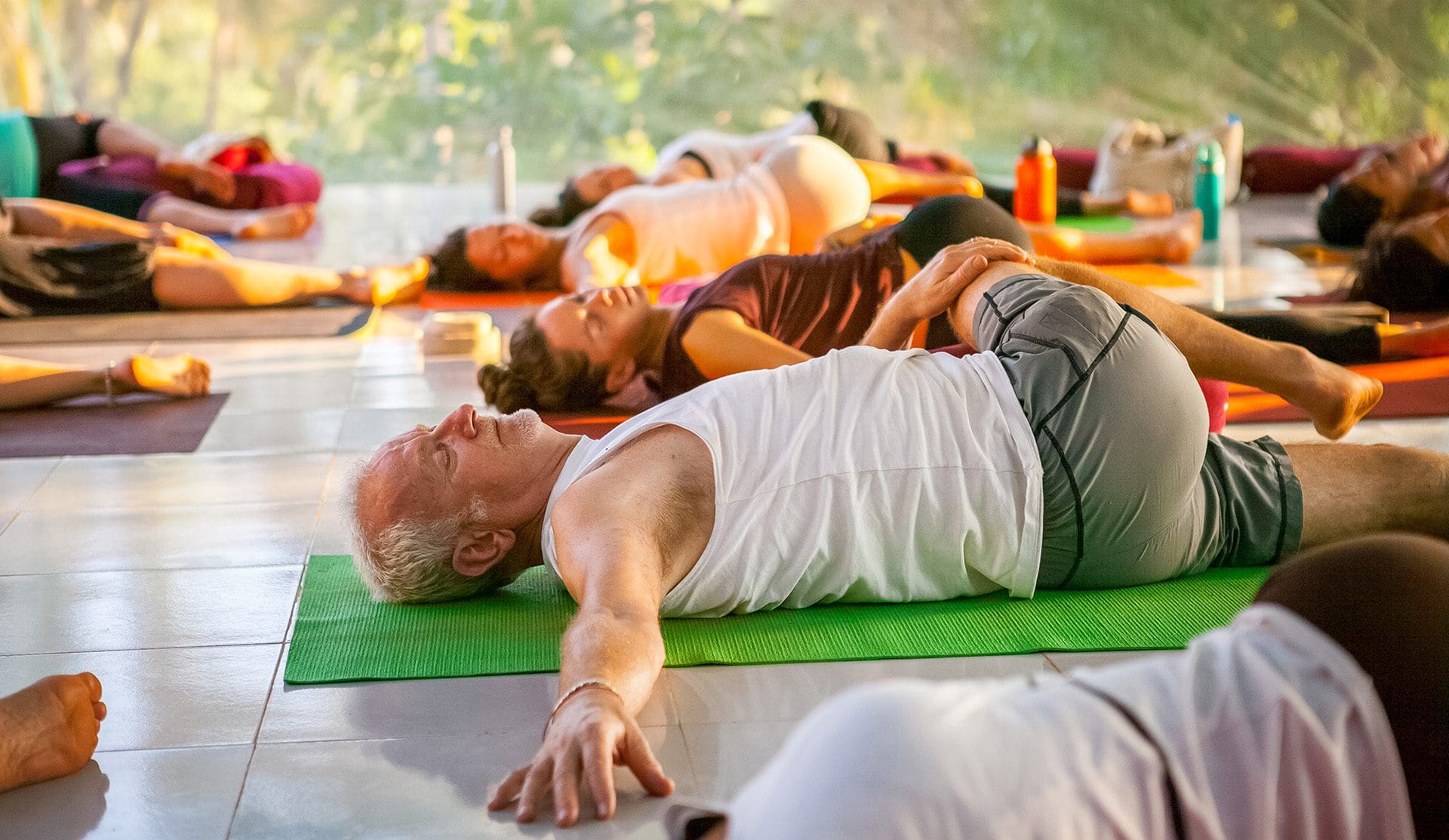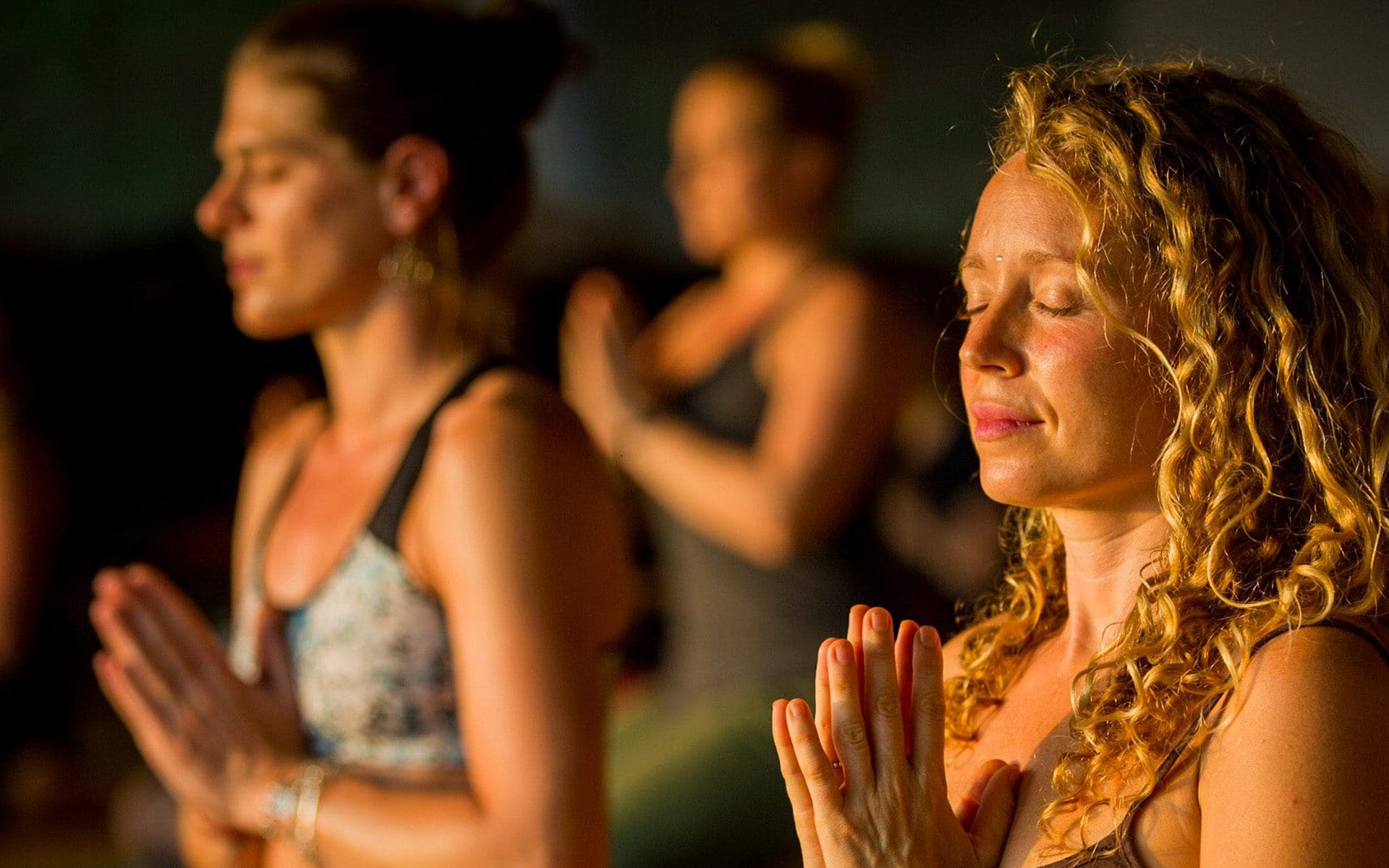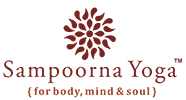What is Hatha Yoga?
Hatha Yoga is a school of yoga that dates back thousands of years; it is a method that involves yoga postures (Asanas), breathing techniques (Pranayama), internal cleansing (Shat Karmas), gestures (Mudras) and energy locks (Bandhas). Over the years, modifications have been made to suit the modern-day lifestyle, however, the definition of Hatha Yoga has remained the same. Unlike Ashtanga Yoga which talks about eight limbs, Hatha Yoga is based on six, that include, Asana, Pranayama, Pratyahara (withdrawal), Dharana (concentration), Dhyana (observing the self) and Samadhi (liberation).
‘Ha’ means the sun and ‘Tha’ represents the moon. The practice is aimed at balancing the energies of the sun and the moon, the masculine and feminine, the mind and body. Traditionally, postures in Hatha Yoga are practiced slowly, with emphasis on the breath.

ORIGIN OF HATHA YOGA
The history of the Hatha method dates back to the 15th century. The six limbs mentioned above became prominent because yogis from the Natha lineage did not wait to master the Yamas and Niyamas and then start practicing yoga postures. Instead, they worked hard and kept practicing the postures until they mastered them. This style of moving to the physical postures came to be known as Hatha Yoga.
Swami Swatmarama put together the Hatha Yoga Pradipika, a popular and beautiful ancient text that describes every step of the practice and how practitioners can achieve Samadhi or liberation. He stated that starting with physical postures is more helpful as most people can master the mind through the body. The cleansing techniques or Shat Karmas purify one’s mind and body, leading to better health. Purification of the body leads to the purification of the mind. This purification and good health encourages spiritual development.
Typically, Hatha yoga’s focus was on the breath and practices to control the breath. This was considered a means to control the prana or ‘life force’, and therefore control the mind. When one gains control over the mind, one can control their life. Swami Swatmarama states in the Hatha Yoga Pradipika, “The mind is the lord of the senses, but the breath is the lord of the mind.”
Mastering certain postures are considered to strengthen the mind and encourage self-discipline. The Lotus Pose, for example, is a difficult one for many beginners to achieve. In the Hatha Yoga Pradipika, Swami Swatmarama says, “Sit in Padmasana, Lotus Posture, for fifteen minutes. That is self-discipline. Why do you fight with the mind first? You have no power to wrestle with the mind, yet you wrestle with it, thereby creating a pattern of animosity towards yourself.” Today, the evolution of Hatha yoga has brought us to a point where we still follow the same practices but as a means to achieve good health, flexibility and strength of the body and mind.
BENEFITS OF HATHA YOGA
Hatha yoga has profound mental and physical health benefits. Physical benefits include improved flexibility and mobility in the joints. In Hatha yoga, postures are static and held for about a minute or more. This improves flexibility in the connective tissue as the fascia is stretched and hydrated. Metabolism improves and healthy weight loss is achieved. The respiratory system gets healthier as breathing patterns improve. Moreover, all body systems function in a healthier way. The practice stimulates cell repair and regeneration, as well as stimulates the lymphatic system and cleanses the body. There is improved blood flow and better oxygen levels. Blockages are released and toxins eliminated. Energy/Prana or life force improves as a result of this. The nervous system is also balanced, reducing stress. In fact, a 2015 study discovered that a 12-week hatha yoga program has positive effects on cardio endurance, muscle strength and endurance, and flexibility, among others.
Mental health benefits include improved focus and concentration, a stronger mind and better balance of emotions. Anxiety and depression reduces. The senses and chakras are stimulated, leading to better creativity and productivity. In a 2016 meta-analysis of 17 studies, results showed that Hatha yoga as a treatment for anxiety is an effective and impactful practice.
HATHA YOGA POSTURES
While there are 84 traditional Hatha yoga poses, the most popular ones are Half Lord of the Fishes Pose, Cow Face Pose, Seated Forward Bend Pose, Headstand, Shoulder Stand, Plow Pose, Cobra Pose, Peacock Pose, Dancer’s Pose and Lotus Pose. Beginners start with easier and simpler variations and then progress to the advanced versions.

HATHA YOGA CLASSES
A Hatha yoga class typically includes a centering and breathing practice to start with. This is normally an energizing or heating breathwork like Bellows Breathing. Then, the teacher guides you through warm-up exercises and Sun Salutations. After this, comes yoga postures, which are practiced with a focus on the breath. They are static and done one after another. Postures include all types – twists, backbends, forward bends, balancing and inversions. The class ends with deep breathing, balancing or cooling pranayama like Alternate Nostril Breathing and Savasana. If you are considering an in-depth training program, a 200 Hour Hatha Yoga Teacher Training Course can help you learn all the foundations of designing a well balanced class.
Props can be used to enhance one’s practice. These could include yoga blocks, straps, cushions and bolsters. For meditation or relaxation, one can use a meditation cushion or blanket.
The Hatha Yoga Pradipika also outlines a guide to a balanced lifestyle for yogis. Factors such as proper exercise, controlled breathing, rest and relaxation, a nutritious and balanced diet and meditation among others, play an important role for a positive and clear state of mind . As practitioners, it is sometimes difficult to inculcate all of these in our daily lives. For those keen on deepening their practice, a Hatha yoga teacher training will help adapt these habits and practices into a sustainable lifestyle.

